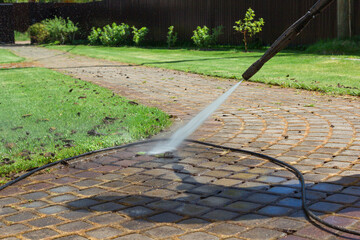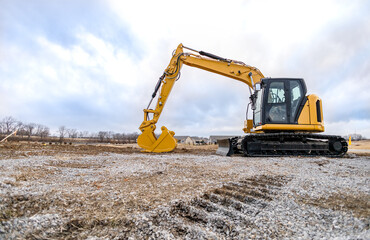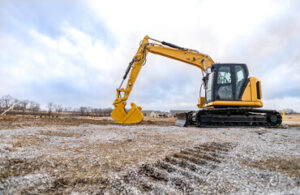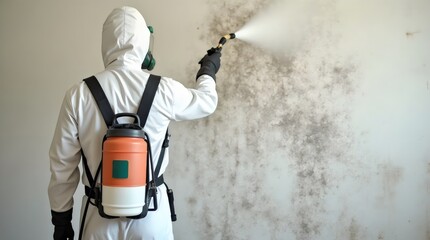Power washing uses hot water combined with high pressure to remove dirt, grime, and stains from hard outdoor surfaces like concrete. This type of cleaning is more effective than traditional cleaning methods and can quickly improve the appearance of heavily soiled areas.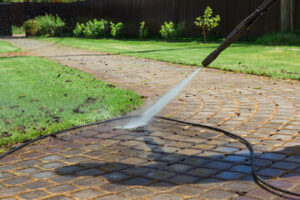
The best time to pressure wash is spring or fall, when the weather is mild. To prevent damage, always test the pressure, heat, and cleaning solutions on a small area first. Visit https://wwoftx.com/ to learn more.
The exterior of your home or business creates the first impression that potential customers and clients will have about your property. If it looks dirty and unkempt, they may assume that the interior is in disrepair as well. This is why maintaining curb appeal is so important. Pressure washing is an effective way to enhance the appearance of your property, ensuring that it gives off a positive first impression.
Dirt, grime, mildew, and other contaminants build up on surfaces over time, causing them to look dull and dingy. Pressure washing removes these substances, revealing the natural beauty of the surface underneath. It also helps to prevent damage caused by mold and algae, saving you money on costly repairs.
Curb appeal is particularly important for homeowners, as it is the first thing that potential buyers will notice about a property. A clean and inviting exterior can increase a property’s value and make it more appealing to buyers, which is why many homeowners choose to have their homes regularly pressure washed.
A professional pressure wash can remove stubborn stains from your siding, driveway, sidewalks, patio, and other areas of your property. This allows you to restore the original color and shine of these surfaces, making your property look newer and more attractive. This is a cost-effective and efficient way to boost your property’s curb appeal, and it can help you sell your home faster and at a higher price.
Curb appeal is also an important consideration for commercial properties. It is essential to create a positive first impression in order to attract customers and clients. Pressure washing is an effective way to improve the appearance of your building’s exterior, which will in turn make your business more appealing to potential customers and clients. In addition, regular cleanings can help to prevent dirt and other debris from building up, which can lead to damage. This is why it is important to incorporate a routine pressure washing plan into your commercial property maintenance schedule.
Removing Mold and Mildew
Mold and mildew are not only unsightly, but they also release spores into the air, triggering allergic reactions and respiratory problems. They also eat away at the surface of your home, causing structural damage. To avoid these issues, regular cleaning is essential. Unfortunately, scrubbing alone isn’t enough to get rid of mold and mildew. This is because these pesky fungi hide beneath dirt, debris, and other organic material. With pressure washing, the force of water blasts through these layers and dislodges mold and mildew at the root. The high-pressure washing process also reaches crevices and small pores where mold often hides. Combined with a chemical cleaning solution that kills any lingering spores, this makes your home safe for the whole family.
Using the right technique is important for getting the best results from your pressure washing. For example, it’s a good idea to start from the top of your home and work down, as this ensures that all areas are cleaned thoroughly. It’s also helpful to remove any furniture, potted plants, or other items that could be harmed by the high-pressure water. In addition, using a pre-treatment solution that is designed to tackle mold and mildew will improve the effectiveness of your pressure washing.
For most surfaces, a normal water pressure is sufficient to clean them. However, for more delicate surfaces such as vinyl siding or shingles, a soft wash with lower water pressure and detergent is recommended. The professionals who perform these services will evaluate your property to determine the appropriate amount of pressure and temperature to use. In some cases, they may even inject a special chemical that can penetrate the pores of these materials to kill off any spores that aren’t visible to the naked eye.
The beauty of pressure washing is that it doesn’t just eliminate the appearance of these fungi, but it also prevents them from returning. If left untreated, these spores will continue to grow and spread throughout your home. This can lead to health issues and expensive structural damage. With regular cleaning, your home will be free of these unsightly and unhealthy invaders.
Protects Your Paint
A good paint job can add value to your home or business, and keeping it clean helps extend its life. Power washing is effective for removing mildew, mold, dirt, debris and other buildup that destroys your paint and causes it to chip, flake or peel. However, blasting your surfaces with too much pressure can damage and strip the surface, so it’s important to hire a professional who understands how to use a power washer properly.
A professional pressure washer will know the proper PSI and GPM (volume of water per minute) to use for each surface type, and they’ll know the right techniques to prevent damage. The most damaging part of a pressure washing is the high-pressure water itself, and it’s easy to damage wood, concrete, vinyl and other delicate materials with too much pressure or heat. The experienced professionals at Squeegee Squad are experts in pressure washing and will know how to safely clean your surfaces without harming them.
It’s important to note that while power washing is safe for most exterior paint types, some older oil-based paints may be sensitive to the cleaning process. It’s always best to consult a professional before proceeding with a power wash, and to test your paint in an inconspicuous area before cleaning the entire surface.
Before painting, you should always pressure wash your property to remove dirt, grime, stains and other debris that can interfere with the adhesion of the new paint. It’s also a good idea to cover plants, shrubs and any other items on or near your home with plastic or drop cloths. This protects them from accidental splashes of cleaning solution or paint splatters and keeps them looking beautiful. Taking the time to protect your plant life will maintain their health and appearance, and it will also save you from having to touch up and repaint any areas where splatters have occurred. Then, you can rest assured that your paint will last for years to come!
Prevents Damage
Pressure washing prevents damage from occurring to your property’s surfaces and can save you money in the long run. Dirt, mildew and other harmful substances can wear down paint and siding, resulting in cracking, peeling and the need for costly repainting or replacement. Regularly cleaning your exterior surfaces with a professional pressure washer removes these substances before they cause any major damage, extending the lifespan of your exterior materials and curb appeal.
In addition, removing moss and other plant growth from your roof, fence or patio can help avoid structural damage. If left untreated, these plants can lift shingles and lead to leaks and other problems. Regularly pressure washing your outdoor areas, including driveways and walkways, can also reduce the need for expensive concrete repair or replacement.
However, the high-pressure water used in pressure washing can cause damage to certain surfaces if not handled properly. The wrong nozzles or cleaning chemicals can strip or damage windows, break plants and etch or pit concrete. It is essential to hire a seasoned professional who uses industrial-grade equipment and understands the proper psi, rotation and cleaning methods for each surface.
Before beginning your pressure washing, you should inspect the area and cover or wet nearby surfaces to protect them from the spray. It is also important to test the pressure on an inconspicuous area of a surface before applying it. Once you have the nozzle set, begin washing the dirty surfaces in a sweeping motion, overlapping each pass and avoiding concentrating the water on one spot for too long, which can cause etching or pitting.
After a thorough cleaning, it’s important to protect the results with protective coatings and sealants. For wood surfaces, applying a quality wood brightener can restore the pH balance and brighten the color of the wood while preparing it for stains or new paint. For paved surfaces, a concrete sealant can prevent moisture penetration and extend the lifespan of the surface. Finally, for vinyl and metal surfaces, a waterproofing agent can help preserve the material and prevent it from becoming brittle or peeling.
